Fast Track Implementation of AI License Plate Recognition
Case Study with Intel
Meeting a Cutting-Edge Challenge
With more than two billion vehicles1 in use worldwide, Automatic Number Plate Recognition (ANPR) solutions are rapidly becoming an essential element of road safety and public transportation strategies around the globe. AI-assisted computer vision is an effective approach to deploying ANPR, well-suited to collecting massive amounts of data from multiple endpoints and performing cost-effective image analysis. At the same time, ANPR deployments must address additional challenges, such as extreme climates, mixed languages, non-standardized license plates, and complex lighting conditions.
To help ensure that ANPR devices execute accurately under these conditions, AI solution provider Wahtari developed their ANPR camera—powered by UP hardware, Intel Atom processors, and Intel Movidius Myriad X VPUs—to handle AI image processing in harsh environments. Wahtari built its own software stack as well: the nLab AI platform, which supports all major AI frameworks and is capable of training models to overcome challenges associated with lighting, viewing angle, motion blur, weather, and operating temperature to provide ultra-fast recognition and remarkable accuracy.
KEY TAKEAWAYS
- Performance optimized for intelligent transportation. Wahtari ANPR Camera integrates cutting-edge hardware from Intel with the state-of-the-art Wahtari nLab AI training platform. It can deliver AI inference at 45 frames per second and detect more than 7000 license plates per hour, powered by a single Intel Movidius Myriad X VPU and inferencing capabilities from the Intel Distribution of OpenVINO toolkit.
- Over-the-air model training for AI at the edge. Utilizing three distinct neural networks in parallel, the dedicated on-chip memory of the Intel Movidius Myriad X VPU, and Wahtari’s proprietary algorithms, recognition support for a new country can be generated in just a few weeks.
- Customized software and tailor-made hardware for a one-stop solution. Wahtari offers customer-specific AI models and delivers custom-built hardware with integrated AI accelerators. Having an AI-based application in the field of computer vision could not be easier.
“In the UAE, we have reached 99.6 percent accuracy measured with over 1.7 million data points. We observed that in the Middle East, the accuracy of competitor solutions can be as low as 90 percent, as this is one of the most challenging areas for ANPR deployment.”
— Marwin Gambel, Wahtari co-founder.
For example, non-AI based systems may misread telephone numbers printed on the vehicle itself as license plates, resulting in improper statistical classification.
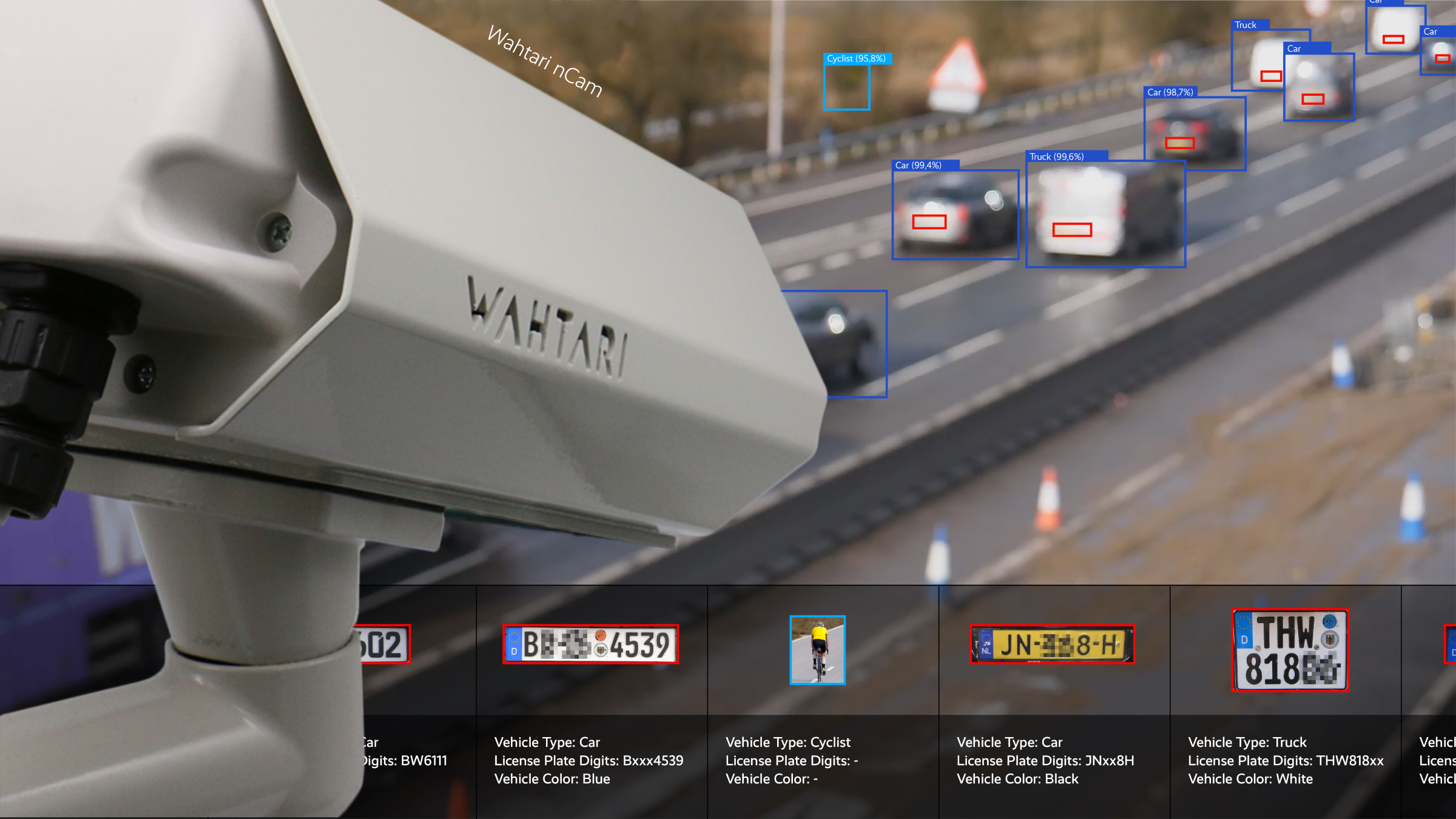
Jumpstart ANPR Applications with Wahtari's Integrated Camera
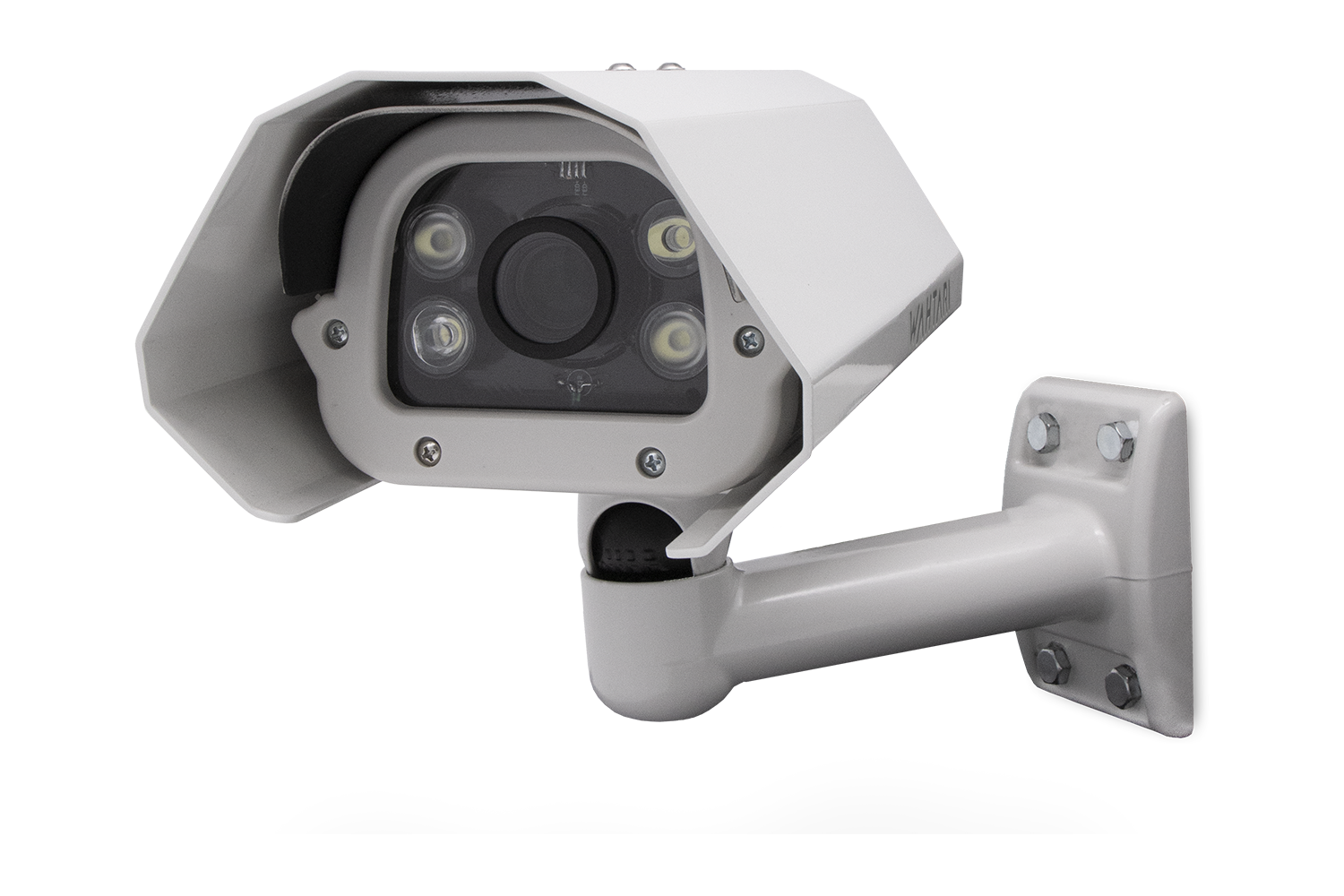
ANPR applications must deliver high performance and accuracy with solutions that are cost-effective to develop. Additionally, the breadth of potential applications for automatic number plate recognition creates a need for those solutions to be customizable within tight cost and time requirements.
To meet this set of technical and business needs, Wahtari built its AI-capable camera with a flexible, modular design. The Wahtari ANPR camera is based on an RGB sensor that captures 4K video at 60 to 160 frames per second (fps), with four integrated LED light sources. Using just 18 watts of power, the camera is fully controllable in software and built for remote and mobile deployment in traffic implementations.
The camera is integrated with two single-board computers made by Wahtari’s hardware partner UP, an innovative brand of AAEON. The UP Core Board, equipped with a 100-pin I/O High-Speed Expansion Board, is powered by an Intel Atom x5 Z8350 quad-core processor with Intel HD Graphics 400 to deliver very high edge computing performance and high 3D graphical performance. This industrial-grade system utilizes the power of UP AI Core X with Intel Movidius Myriad X VPU to run AI models and accelerate computer vision performance at the edge.
- Image recognition in as little as 50 to 100 milliseconds, enabled by high-performance local vision processing without connection latency.
- Built for customization, the flexible and modular design of the Wahtari ANPR Camera lets users easily swap sensors with different resolutions, frame rates, or inference speeds.
- Accurate results in adverse conditions, with IP66-rating housings (-40° C to 55° C /-40° F to 131° F) and software calibrated against rain, ice, dust, and glare.
- Upgradable AI accelerators to optimize vision analytics at the edge, leveraging the UP Vision Plus X with three Intel Movidius Myriad X VPUs to run AI inference up to 120 fps.
nLab AI Platform Loads Three Distinct Neural Networks in Parallel
nLab is designed to load three neural networks in parallel into the on-chip memory of the Intel Movidius Myriad X VPU. Each network is optimized for its dedicated task, establishing a hybrid pipeline of recognition, verification, and optimization steps orchestrated by Wahtari’s proprietary algorithms.
Wahtari’s nLab AI platform streamlines the development of AI solutions with a foundational selection of software and hardware. nLab’s open architecture reduces cost and complexity, minimizing the risk for organizations that want to incorporate ANPR into their traffic and parking monitoring solutions, with benefits that include the following:
- Pre-trained AI model optimizes workflows. With Wahtari’s over-the-air technology, the interconnection of labels and cloud-based AI training supports immediate provisioning of the end application. Users have the ability to update data at their fingertips. The system identifies images and gives automatic suggestions, for a 50 percent reduction compared to human error rate. In a final step, the Wahtari system uses a four-eye principle to minimize errors.
- Robust in-house server saves time for end users without regenerating datasets for AI models. Deployments around the globe have helped Wahtari accumulate a high-quality database. Wahtari can retrieve 300,000 images and enable AI model training for ANPR in a few weeks, as opposed to requiring approximately six months for initiation, data collection, and labeling from scratch. Legacy conventional systems typically needed years to support several regions.
- Adapts intelligently to novel geographies. To support global deployments, Wahtari’s nLab AI platform is built to readily adapt to unfamiliar plate styles, languages, and character types. The process begins by capturing fewer than 100 of the novel plates, which human operators manually label. That data entry enables nLab to retrain its deep learning model at a Wahtari or customer data center. The new model can then be deployed over-the-air or using physical media so that existing cameras can interpret the novel plates. nLab’s deep learning models can process license plates that are based on a range of languages and character sets, from Arabic to Mandarin.
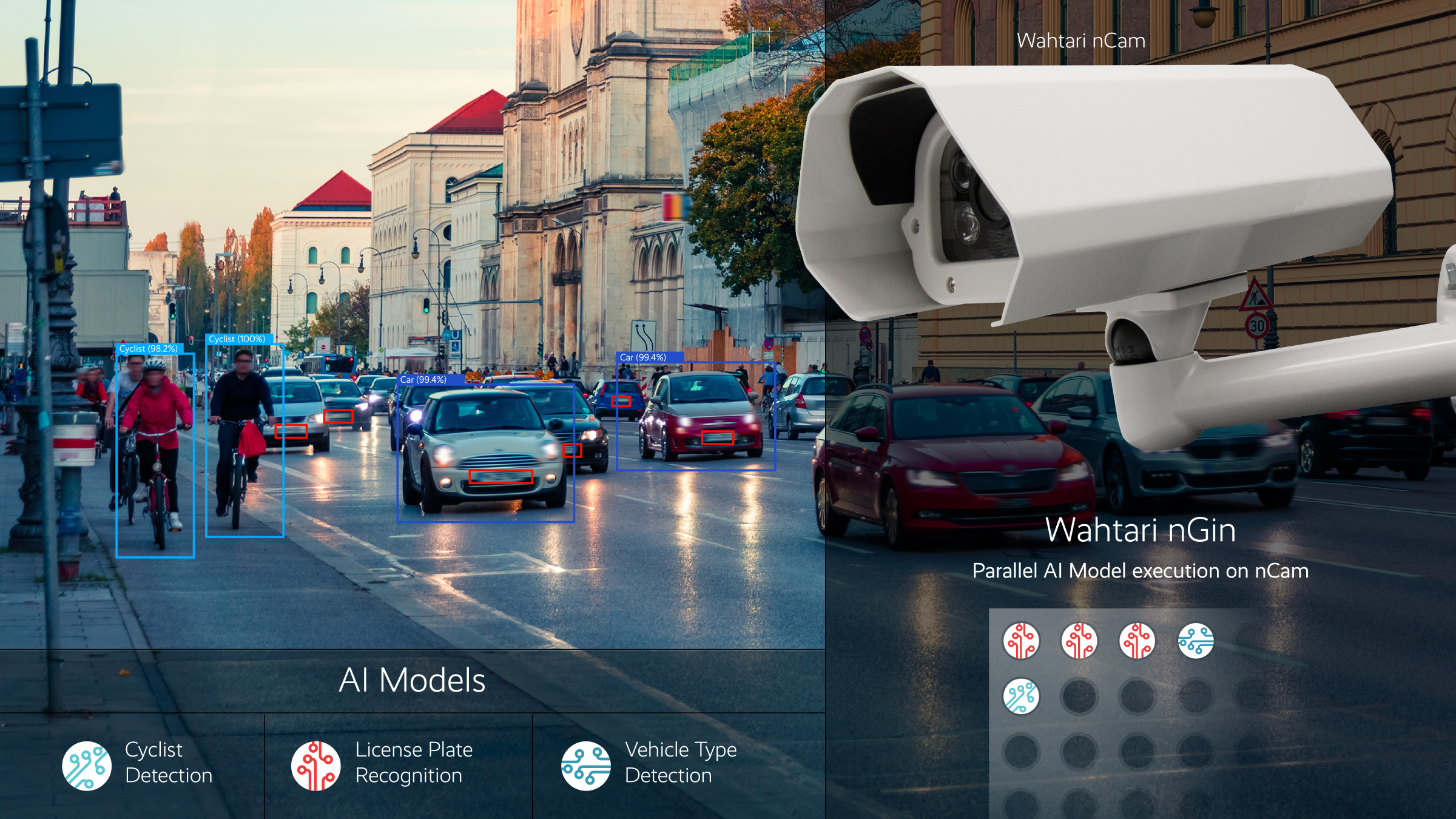
Intel Distribution of OpenVINO Toolkit Accelerates Development and Optimizes Deep Learning Models
To deploy AI inference from multiple endpoints and process license plates as accurately as possible, it is fundamental to streamline the software development pipeline with consistent tools and programming languages across all deployment locations. Previous models faced a number of challenges on this front, including data-loading bottlenecks, SDK complexity, custom kernel requirements, and the inability to maintain stability while executing inference in multiple contexts. In response, Wahtari recognized the need for an optimized solution that addresses those needs while also providing fast time to market.
The Intel Distribution of OpenVINO toolkit optimizes deep learning models and offers a simple and unified API for inference that can switch deployment targets easily and eliminate application redevelopment. Wahtari optimizes AI inference workloads and parses its output to the Wahtari neural engine by means of the toolkit’s validated models and common software frameworks such as TensorFlow, Caffe, and MXNet.
“The Intel Distribution of OpenVINO toolkit makes it possible to switch between different hardware for execution, like CPU, GPU, FPGAs and VPUs, on-the-fly.”
— Sebastian Borchers, Wahtari co-founder
Operating large scale, wide-area AI deployments on the edge requires interdisciplinary capabilities that include AI framework management, data sciences, software development, and hardware engineering. Ease of use, fast deployment, and integrability with production systems are key to making good use of time and development resources. The OpenVINO toolkit is a free, downloadable toolkit that helps developers build tools for computer vision workloads and deep learning inference. Using this toolkit, Wahtari deploys optimized inference from edge to cloud and streamlines the path to results.
System Level Innovation with UP's Single-Board Computers
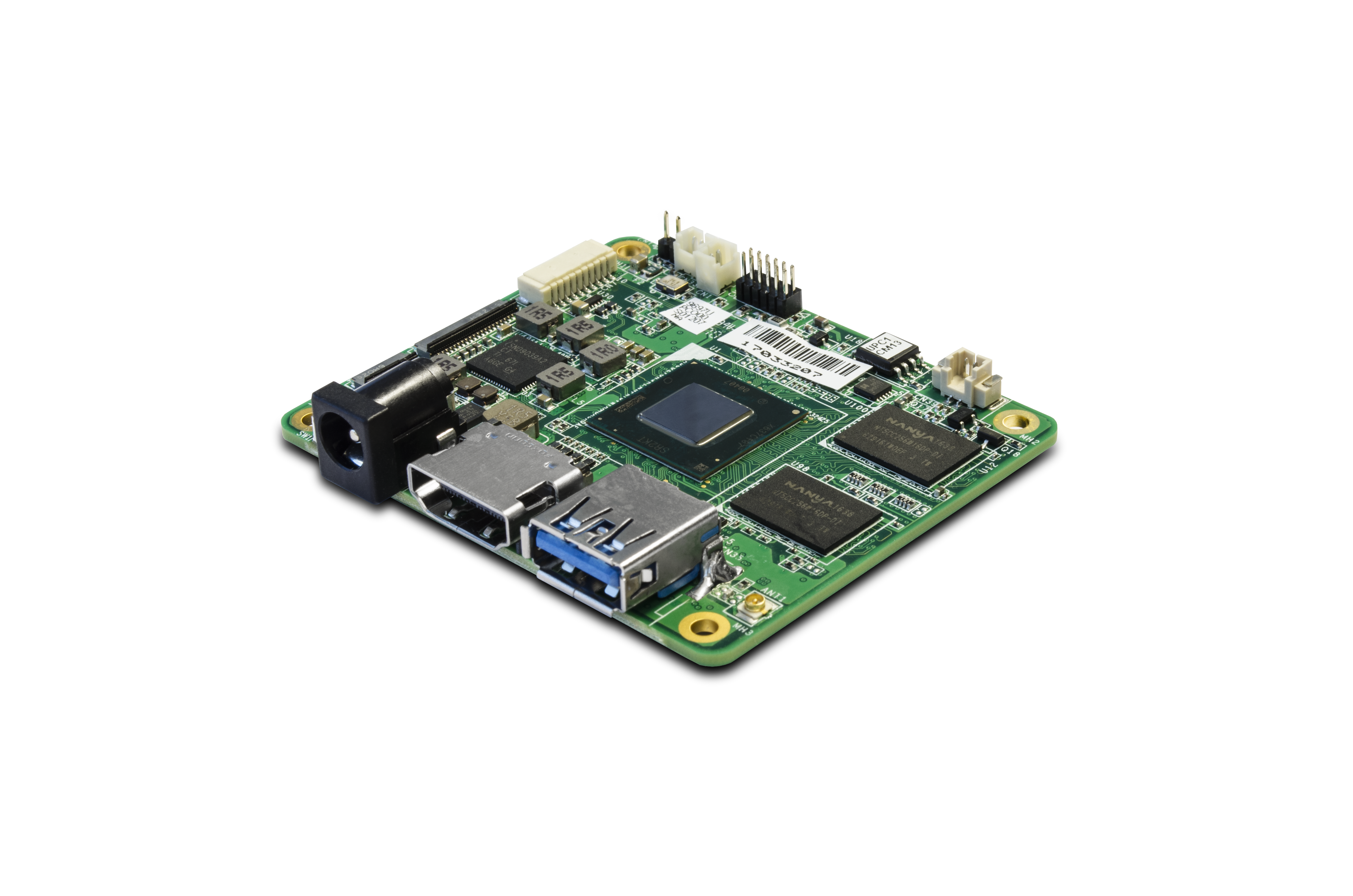
AAEON’s UP line of computers meets the professional maker community’s time-to-innovation needs and can support durability and scale requirements to mass produce solutions. The UP AI Core X and UP Core single-board computers provide cost-effective, robust edge processing within constrained power and thermal envelopes. The company partners with its customers to customize offerings for specific implementations and bring them into production, with assurances of specific platform availability.
UP systems are built to power edge computing, enabling many of the solutions that are gradually making AI part of everyday life. For example, avoiding the connection latency associated with centralized processing, edge solutions for access control can respond instantaneously to the presence of a specific car.
Edge computing can also help support data privacy considerations and regulations such as the EU’s General Data Protection Regulation (GDPR). For example, the Wahtari solution can mask all unneeded attributes of a video stream, discarding them as well as the video stream itself after analysis. That information need never be stored or transmitted, helping to protect privacy.
As a member of the Intel AI Builders Program, AAEON has access to a range of Intel hardware solutions including CPUs, GPUs, VPUs, and FPGAs. Deep expertise across those technologies enables the company to offer cutting-edge boards and tools such as those that power the Wahtari solution.
The VPU Technology at the heart of Visual AI
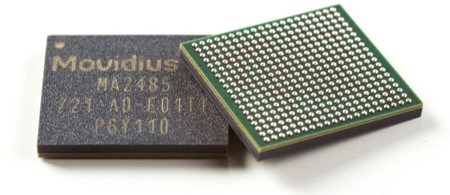
The Intel Movidius Myriad X VPU delivers massive throughput with very low space, power, and thermal requirements. Its Neural Compute Engine is a dedicated on-chip accelerator for deep learning networks that helps the processor deliver over one trillion operations per second of deep neural network inferencing performance.2 The processor architecture is based on an array of 16 C-programmable very long instruction word (VLIW) vector processing engines that optimize performance and power efficiency by reducing the amount of on-chip data movement.
The VPU also includes a modular arrangement of more than 20 dedicated imaging and vision hardware accelerators that perform tasks such as stereo depth and optical flow, contributing further to accelerate inference. These resources all access a shared pool of 2.5 MB of on-chip memory with up to 400 GB/sec of internal bandwidth, using an intelligent fabric that minimizes accesses so that image signal processing is as efficient and high speed as possible.
Interleaved computer vision and deep neural network inference application pipelines further optimize data flows. Up to eight HD RGB camera sensors can be connected directly to a single Intel Movidius Myriad X VPU simultaneously, supporting up to 700 million pixels per second of image signal processing throughput.
To enable customers to rapidly develop cutting-edge solutions based on the Intel Movidius Myriad X VPU, Intel offers a purpose-built SDK with frameworks, tools, drivers, and libraries to accelerate development and reduce risk. The SDK also automates and streamlines porting neural networks from popular frameworks such as TensorFlow and Caffe.
Conclusion
When providers can take advantage of pre-existing AI innovation, they can bring better solutions to market faster, and at lower cost. For all of the potential use cases around license plate recognition, Wahtari provides that foundation, with a comprehensive solution stack based on its nLab AI platform and complementary software ingredients, integrated with a UHD camera and system hardware provided by UP. Intel architecture lies at the heart of the solution, including the Intel Movidius Myriad X VPU.
The Wahtari platform for ANPR is an engine for innovation that puts visual intelligence easily in the hands of customers as they create value-added offerings that see clearly into the future.
For more information about the Intel AI Builders Program, visit builders.intel.com/ai
For more information about UP, visit up-shop.org
For more information about Wahtari, visit wahtari.io
About UP
UP is a brand founded by AAEON Technology Europe in 2015, with the mission to innovate across technologies, business models, and integrated solutions. The UP team collaborates with market leaders in different vertical markets to develop integrated solutions and build a large online community to work closely with developers.
About Wahtari
Based in Munich, Wahtari leverages a broad range of AI hardware and software components in combination with the Wahtari AI vision platform to rapidly develop customized, advanced AI systems. Wahtari also offers well-proven, ready-to-use AI systems that can be easily adapted and integrated.
1 World Health Organization, June 2018. “Global Status Report on Road Safety 2018.”
2 Maximum performance based on peak floating-point computational throughput of Neural Compute Engine. Actual results on deep neural networks may achieve less than peak throughput.